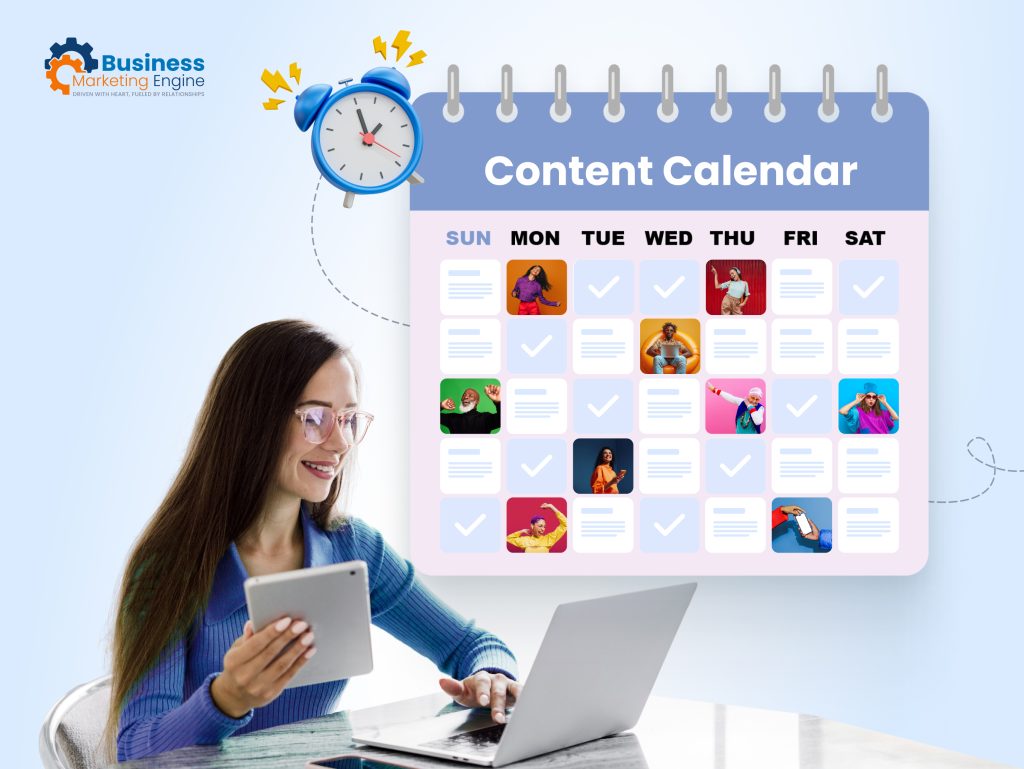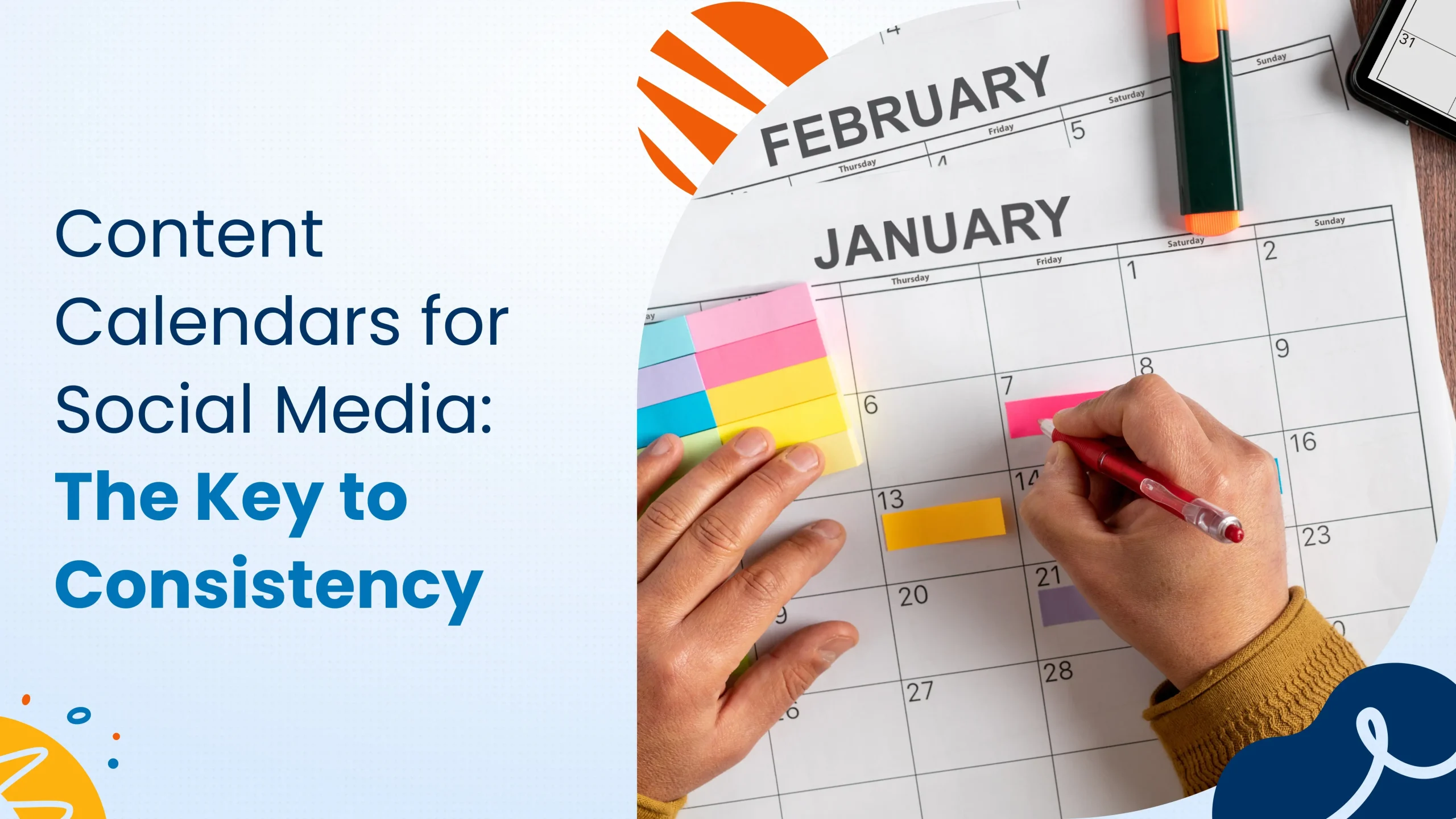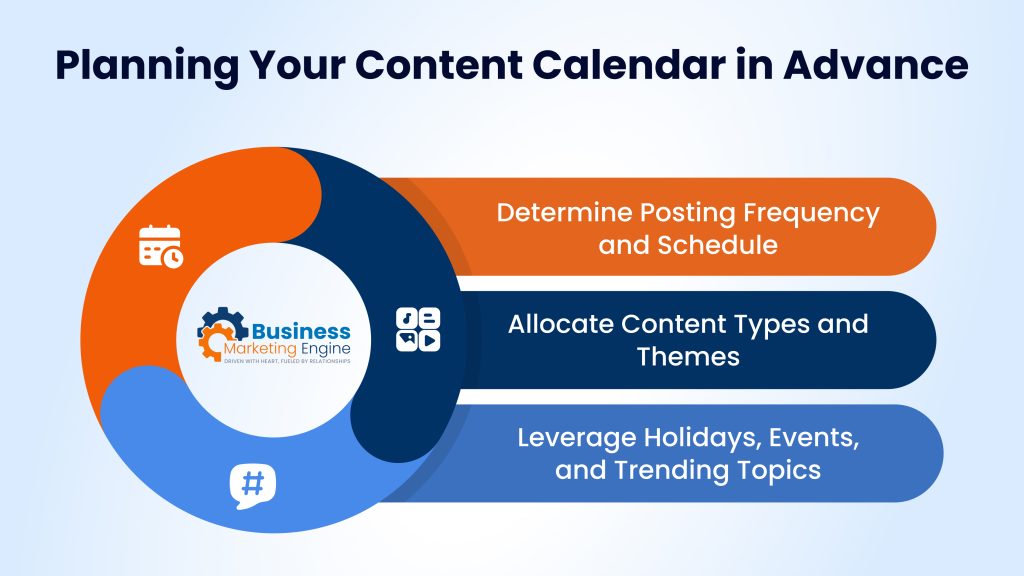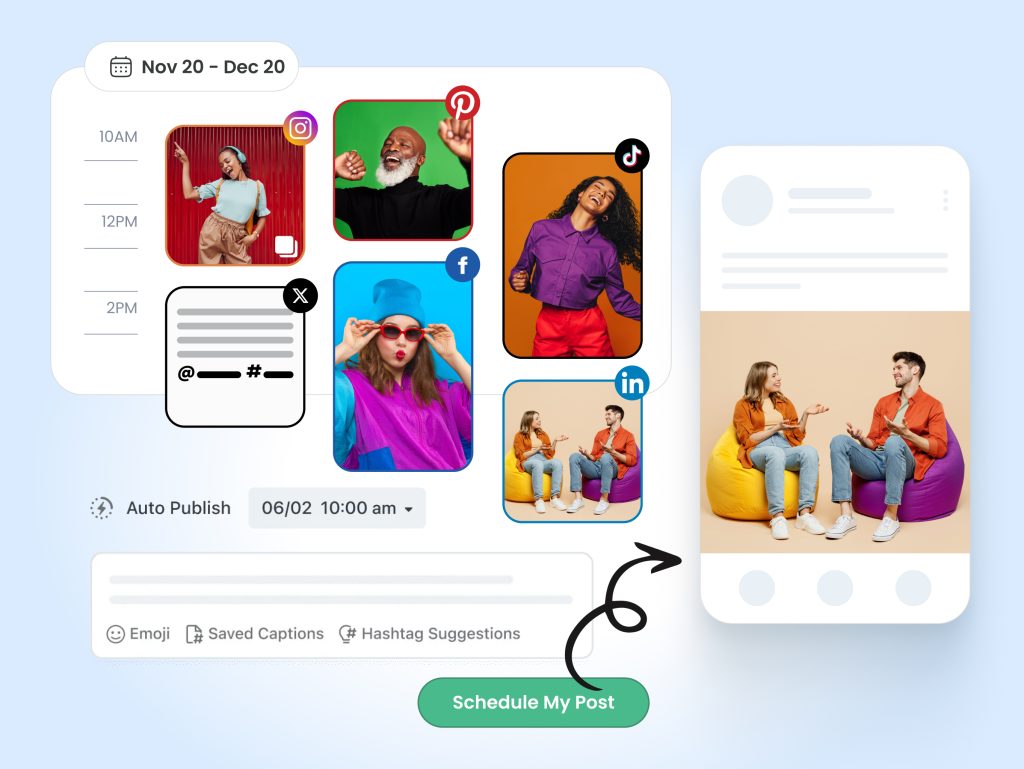Are you struggling to keep up with your social media posting schedule? A content calendar can be a game-changer for maintaining consistency and ensuring that your content is published on time. In this blog post, we’ll discuss the importance of content calendars and provide tips for creating an effective strategy.
By the end of this post, you’ll have a clear understanding of how to use a content calendar to streamline your social media marketing efforts!
Benefits of a Content Calendar
Ensuring Consistent Posting
One of the biggest benefits of a content calendar is that it helps you ensure consistent posting. By scheduling your content in advance, you can avoid gaps in your posting schedule and maintain a steady presence on social media.
Streamlining Content Creation
A content calendar can also help you streamline your content creation process. By planning your content ahead of time, you can ensure that you have the resources you need to create high-quality posts.
Enhancing Strategic Planning
Using a content calendar can also help you develop a more strategic approach to your social media marketing. By planning your content in advance, you can align your social media efforts with your overall business goals. This helps ensure that your content is relevant and engaging to your target audience.
Components of an Effective Content Calendar
Post Schedule
A posting schedule outlines when you will publish content on each of your social media platforms. Consider factors such as your audience’s online behavior and platform-specific best practices when creating your schedule.
Content Themes and Categories
Define the themes and categories of content you will be publishing. This will help you ensure a diverse and engaging content mix. Consider topics such as product announcements, behind-the-scenes content, industry news, and customer testimonials.
Key Dates and Events
Identify any important dates or events that you want to incorporate into your content calendar. This could include holidays, industry conferences, or company milestones. By planning ahead, you can ensure that your content is relevant and timely.
Choosing the Right Content Calendar Tool
There are many different content calendar tools available, both free and paid. The best tool for you will depend on your specific needs and budget.
Free Options:
- Google Calendar: A simple and easy-to-use option that can be integrated with other Google tools.
- Hootsuite: A popular social media management platform that includes a content calendar feature.
- Buffer: Another popular social media management platform with a built-in content calendar.
Paid Options:
- CoSchedule: A comprehensive content calendar tool with features like team collaboration and analytics.
- Kontentino: A social media management platform with a powerful content calendar and scheduling features.
- Sprout Social: Sprout Social is a comprehensive social media management platform that includes a content calendar.
When selecting a content calendar tool, consider the following features:
- Ease of use: The tool should be intuitive and easy to navigate.
- Customization: The tool should allow you to customize your calendar to fit your specific needs.
- Integration: The tool should integrate with other tools you use, such as social media management platforms and design software.
- Collaboration: If you work with a team, the tool should allow for easy collaboration and sharing.
- Analytics: Some tools offer analytics features that can help you track the performance of your content.
Planning Your Content Calendar in Advance
Determine Posting Frequency and Schedule
The frequency of your posts will depend on various factors, such as your target audience’s online behavior and the specific platform you’re using. Research best practices for each platform to determine the optimal posting frequency. Once you’ve established your desired frequency, create a schedule for each platform.
Allocate Content Types and Themes
Decide on the types of content you’ll be publishing, such as blog posts, images, videos, and infographics. Then, allocate these content types across your calendar to ensure a diverse and engaging mix. Consider using themes or categories to further organize your content.
Leverage Holidays, Events, and Trending Topics
Stay up-to-date on holidays, events, and trending topics in your industry. By incorporating these into your content calendar, you can create timely and relevant posts that are more likely to resonate with your audience.
Maintaining Content Variety and Balance
A balanced content strategy includes a mix of informative, entertaining, and promotional content.
- Informative content can include blog posts, articles, or infographics that provide valuable insights to your audience.
- Entertaining content can include memes, funny videos, or behind-the-scenes glimpses of your business.
- Promotional content can include product announcements, sales, or contests.
Don’t be afraid to experiment with different content formats to keep your audience engaged! This could include:
- Images: Use high-quality images to capture attention and illustrate your message.
- Videos: Create videos to share stories, tutorials, or product demonstrations.
- Polls: Conduct polls to gather feedback from your audience and encourage interaction.
- Carousels: Use carousels on platforms like Instagram to share multiple images or videos in a single post.
- Stories: Utilize the Stories feature on platforms like Instagram to share short, ephemeral content.
Collaborate with Team Members on Content Creation
If you work with a team, effective collaboration is essential for creating and managing your content calendar. Assign specific roles and responsibilities for content creation, scheduling, and posting. This will help ensure that everyone is on the same page and that tasks are completed efficiently.
Many content calendar tools offer features that facilitate team collaboration. Look for tools that allow you to:
- Assign tasks: Assign specific tasks to team members, such as writing blog posts or creating visuals.
- Comment and provide feedback: Allow team members to comment on and provide feedback on each other’s work.
- Track progress: Monitor the progress of tasks and ensure that deadlines are met.
- Share calendars: Share your content calendar with your team so that everyone is aware of the schedule.
Scheduling and Publishing Your Content
To streamline your social media marketing efforts, integrate your content calendar with a social media scheduling tool. These tools allow you to schedule posts in advance, manage multiple platforms, and track the performance of your content.
Features to look for in a social media scheduling tool include:
- Platform integration: The tool should integrate with all of the social media platforms you use.
- Scheduling features: The tool should allow you to schedule posts for specific times and dates.
- Team collaboration: If you work with a team, the tool should allow for easy collaboration and sharing.
- Analytics: Look for a tool that provides analytics to help you measure the performance of your content.
By using a social media scheduling tool in conjunction with your content calendar, you can effectively manage your social media marketing efforts and achieve your goals.
Conclusion
A content calendar is an essential tool for any business that wants to maintain a consistent and effective social media presence. By following the tips outlined in this blog post, you can create a content calendar that helps you streamline your workflow, improve your content strategy, and achieve your marketing goals.
Ready to stop struggling to keep up with your social media content? Our marketing experts can help you create a customized content calendar that drives results for your business. Book a free consultation today!





